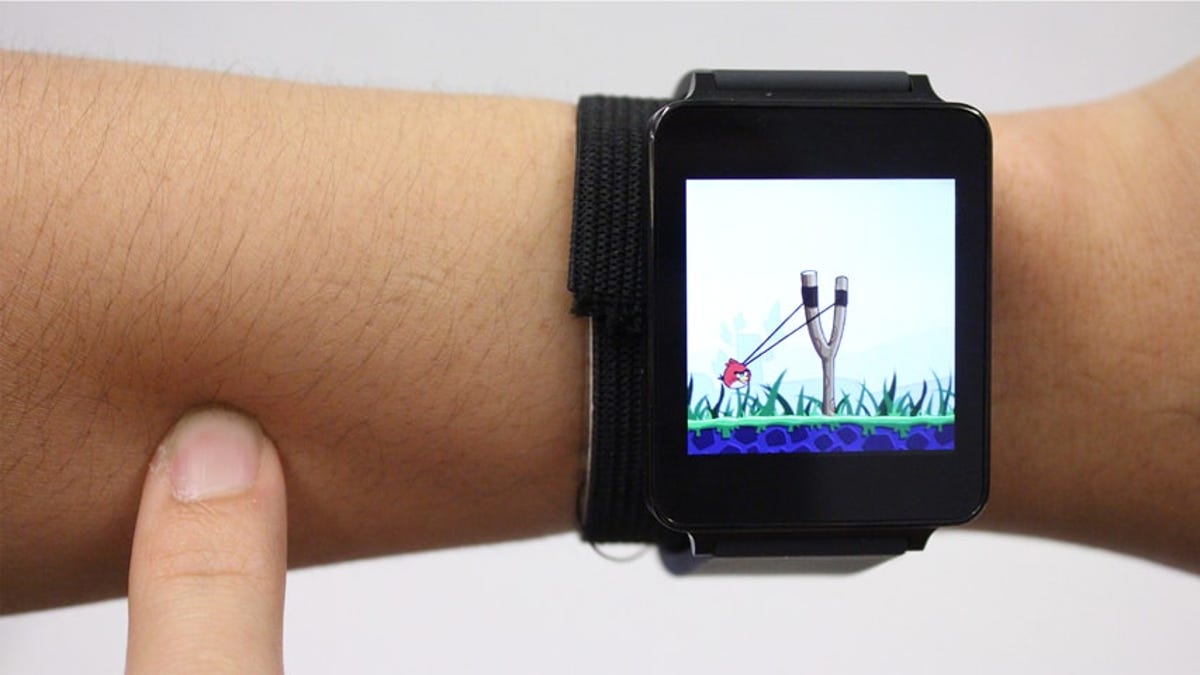SkinTrack turns your entire forearm into a smartwatch touchpad
Imagine a sci-fi world where your arm is an extension of your smartwatch. Carnegie Mellon has made it a reality.
Smartwatches can be cool little gadgets, but they have a lot of limitations, with the functionality of such a tiny touchscreen being a notable complaint. Researchers at Carnegie Mellon University have come up with a clever way to extend the smartwatch interface and turn your entire forearm into a working, and surprisingly accurate, touchpad.
The SkinTrack system comes from Carnegie Mellon's Human-Computer Interaction Institute's Future Interfaces Group, the same folks who brought us some cool 3D-printed hair last year. SkinTrack consists of a custom ring and a set of electrodes built into a smartwatch strap. The ring emits an electrical signal that is picked up by the watch band's electrodes, tracking the ring's location as you move.
SkinTrack can follow your finger even when it's hovering just above your arm. The technology also knows when you're actually pressing on your skin. The system can be used to recognize gestures, continuously track your finger, and register taps. It still works when you have a sleeve down, so no worries about bearing your arm in cold weather.
"The great thing about SkinTrack is that it's not obtrusive; watches and rings are items that people already wear every day, " said doctoral student Yang Zhang. One of the biggest advantages of SkinTrack is that your giant fingers don't block most of your smartwatch screen as you're interacting with it.
SkinTrack is in prototype form. There's a bit of work to be done before it becomes a more viable system for widespread use. One of the biggest challenges is sorting out how to keep the ring powered up. The research team is also working out kinks involving sweat and body motion, which can confuse the signal.
If SkinTrack makes it out of the lab and into production some day, it could be a very welcome new feature in the smartwatch world, making the dainty devices a lot more convenient to interact with.


